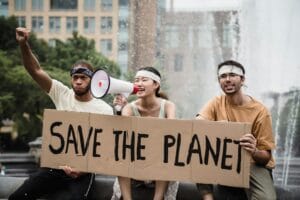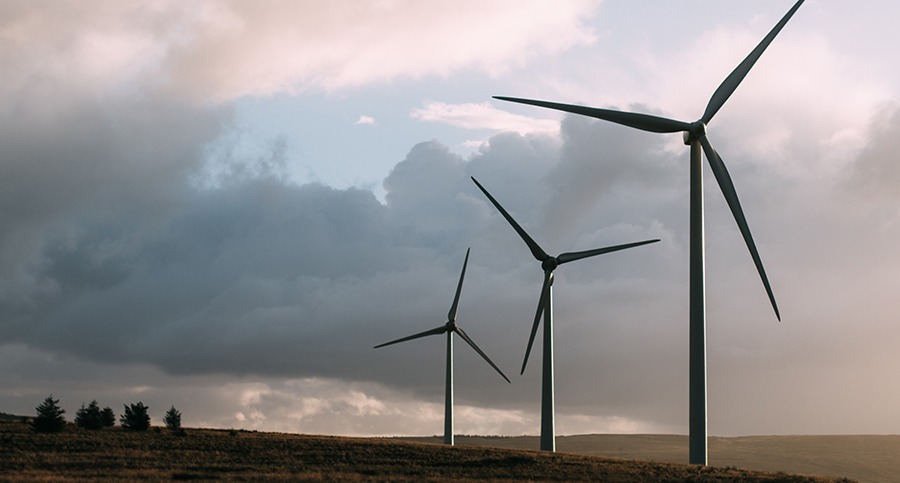China’s Waste Crisis: From Overflow to Opportunity
China’s waste-to-energy development has emerged as a central strategy in tackling the country’s mounting waste crisis, with the colossal volume of municipal solid waste (MSW) generated by its 1.4 billion citizens and rapid urbanisation. In 2020 alone, China produced over 235 million tonnes of urban waste—equivalent to more than 600,000 tonnes daily (Zhong & Espinoza, 2025). Traditional landfill-based waste disposal strains land resources and poses serious environmental risks, including groundwater contamination, methane emissions, and toxic leachates (Rahman et al., 2024).
This is the backdrop for China’s dramatic shift toward waste-to-energy (WtE) technologies, especially large-scale incineration. Touted as a cleaner, more efficient alternative to landfills, WtE has become a central pillar in China’s national waste management strategy (Wu, 2024).
But is this strategy truly sustainable, or simply a high-tech way to hide the problem?
The THRIVE Framework provides an evaluative lens for this task, specifically through Foundational Focus Factors (FFFs): Materiality, Systems Thinking, and Integral Thinking. These pillars offer a rigorous, holistic lens to assess whether China’s waste-to-energy development is helping the country flourish or merely masking deeper ecological and social costs.

Source: Zhang Kaiyv on Unsplash, 2020
What Is Waste-to-Energy and Why Does It Matter for China’s Clean Energy Transition?
Waste-to-energy (WtE) refers to the process of converting non-recyclable waste materials into usable forms of energy, primarily electricity and heat, through combustion, gasification, pyrolysis, or anaerobic digestion. Among these, incineration with energy recovery has become China’s dominant approach and is aligned with broader clean energy transition and efforts to meet its carbon neutrality pledge by 2060 (Luo et al., 2024).
| General Benefits of WtE (Hsu et al., 2024) | When WtE May Be Justified (Atstaja et al., 2024) |
| – Reduces waste volume by up to 90%. – Minimises reliance on landfills. – Generates renewable electricity to power homes and businesses. – Cuts methane emissions, a greenhouse gas 25x more potent than CO₂. | – For contaminated or non-recyclable residuals (e.g. certain plastics, medical waste). – In regions lacking a mature recycling infrastructure. – As a transition solution, provided it does not lock in long-term fossil-fuel-like systems. |
Yet, as the THRIVE Framework’s Materiality concept warns, relevance matters more than scale. Just because a technology is large and impactful doesn’t mean it’s addressing the right sustainability priorities, especially if it displaces better alternatives like recycling or composting. WtE may have a role for truly residual waste, but should not replace or undermine upstream solutions. The THRIVE Framework supports this view through its emphasis on Materiality, Systems Thinking, and Integral Thinking, ensuring sustainability decisions reflect long-term, regenerative priorities, not just short-term impact metrics.
Scaling Up: China’s Massive Investment in Incineration
China’s waste-to-energy (WtE) development expansion has been meteoric. In 2000, there were just a handful of incineration plants; by 2020, that number exceeded 400 operational WtE facilities, with a capacity to process over 145 million tonnes of MSW annually (Sun et al., 2024).
Notable developments include:
- Shenzhen East WtE Plant – projected to become the largest WtE facility in the world, capable of processing over 5,000 tonnes of waste daily (Kitto Jr, 2025).
- Hangzhou WtE Facility – a notable example of large-scale WtE infrastructure that evolved from public resistance to local acceptance, reflecting China’s capacity to integrate waste solutions into densely populated urban areas (Song et al., 2024).
- Guangzhou’s Circular Economy Industrial Park – where WtE is integrated with recycling, composting, and environmental education (Zhou, 2025).
These mega-projects underscore China’s strategic pivot toward energy recovery as a viable solution to MSW overflows. Yet, this strategy has raised valid questions: Is it a stopgap or a sustainable solution?
The Materiality principle reminds us: what’s reported as “success” must be assessed against what’s most relevant to environmental integrity, social well-being, and future viability.

Source: Photo by Robert Bye on Unsplash, 2018
Environmental Impact: Is Waste-to-Energy Really Green?
Despite its benefits, China’s waste-to-energy development through incineration carries significant environmental trade-offs:
- Air Pollution: If not managed well, incinerators emit dioxins, furans, and heavy metals (Wang et al., 2024).
- Ash Disposal: Bottom ash and fly ash contain toxic residues requiring careful treatment (Zou et al., 2025).
- Lifecycle Emissions: While better than landfills, incineration still emits CO₂ (Ma et al., 2024).
According to one of the THRIVE Framework’s Foundational Focus Factors, Systems Thinking, sustainable waste strategies must address feedback loops, time delays, non-linear effects, and downstream efficiency. While China’s WtE expansion offers logistical advantages like shorter transport distances. It risks rebound effects such as reduced recycling and concentrated pollution if upstream waste generation is ignored. A systems-informed approach prioritises waste prevention and reuse, minimising emissions, transport needs, and infrastructure burdens. Composting and recycling support circularity but rely on upstream actions like design, sorting, and behaviour change.
Truly sustainable policy must be multi-layered, addressing urban design, product lifecycle, and equity with reuse and redesign at the core, rather than optimising disposal methods.
Global Lessons from China’s Waste Strategy
China’s waste-to-energy (WtE) strategy offers a compelling case study, reflecting the strengths and limitations of large-scale sustainability interventions (Chiang et al., 2024).
Lessons the World Can Learn:
- State-led Infrastructure: Centralised planning enables rapid WtE deployment at scale (Yang, 2024).
- Economic Incentives: Feed-in tariffs and subsidies accelerated private investment (Gad et al., 2024).
- Public Awareness Campaigns: waste sorting programmes promoted better upstream behaviour (Ren & Zuo, 2024).
Lessons to Avoid:
- Overcapacity Risk: Excessive incineration may disincentivise recycling and composting (Tait et al., 2025).
- Environmental Injustice: WtE plants are often sited in lower-income areas, raising equity concerns (Nie et al., 2024).
- Transparency Deficits: Citizens have protested against plants owing to a lack of data on emissions and governance (Zhang, 2025).
The THRIVE Framework emphasises Integral Thinking, one of its key Foundational Focus Factors. It is urging policymakers and institutions to go beyond siloed metrics. Adopting a Multi-Capital, integrated lens should guide sustainability strategies across sectors. China has reported economic and energy gains from expanding WtE. However, a fragmented approach can mask deeper harms, such as ecological loss or declining public trust. Integral Thinking challenges decision-makers to assess success across human, social, ecological, and technological dimensions. This helps avoid short-term gains that undermine long-term resilience.

Source: Photo by Ignat Kushanrev on Unsplash, 2019
The Future: Can China Align Waste-to-Energy with a Circular Economy?
The circular economy advocates for designing waste out of the system. WtE, while useful, should not compete with recycling or composting. China’s future challenge lies in integrating WtE within a broader waste hierarchy (Awino & Apitz, 2023):
- Reduce and Redesign: Incentivise product design that minimises waste.
- Reuse and Repair: Develop reverse logistics and refurbishment hubs.
- Recycle Organics: Promote anaerobic digestion for food and garden waste.
- Smart Sorting Infrastructure: Deploy AI-driven material recovery facilities (MRFs).
Some promising shifts indicate that China is beginning to explore more systemic and upstream approaches to waste management, moving beyond end-of-pipe solutions like incineration (Zhou, 2024).
- Zero Waste Pilot Cities: 16 cities including Shanghai and Shenzhen are experimenting with circular economy principles.
- Plastic Ban Expansion: Single-use plastics are being phased out in retail and food services.
- Digital Waste Tracking: Blockchain and AI are being used to trace waste flows and optimise collection.
However, unless WtE is limited to truly non-recyclable residues, the strategy risks undermining ecosystem regeneration and contradicting the core of a thrivable society (Achi et al., 2024).
Conclusion and Call to Action (CTA)
The progress of China’s waste-to-energy development offers both inspiration and caution, highlighting key lessons for other nations pursuing similar pathways. It has transformed a mounting waste crisis into an opportunity for infrastructure modernisation and partial decarbonisation. But it’s not a silver bullet. China must now shift focus from end-of-pipe solutions to upstream innovation. A full circular economy is needed to protect communities and ecosystems (Li et al., 2025).
- Governments: Rethink subsidies to support composting and reuse alongside WtE (Jiao et al., 2024).
- Businesses: Invest in material circularity, not just combustion (Kaur & Singhal, 2024).
- Citizens: Practice waste sorting and demand transparency in WtE operations (Shi, 2023).
- Researchers and Advocates: Develop better metrics beyond SDGs aligned with planetary boundaries and human well-being (Parvathy et al., 2025).

Source: Photo by Bao Menglong on Unsplash, 2023
Achieving THRIVE goals
The UN’s Sustainable Development Goals (SDGs) emphasise access to sanitation (SDG6: Clean Water and Sanitation), clean energy (SDG7: Affordable and Clean Energy), and climate action (SDG13: Climate Action), but often fall short on systemic integration and circular metrics. The THRIVE Framework goes further, demanding Context-Based thresholds, real stakeholder participation, and regenerative outcomes.
THRIVE goals require evaluating China’s WtE strategy through its strengths, together with its impact on systemic regeneration. WtE offers clear advantages: it reduces landfill use, recovers energy, and curbs methane emissions, contributing to Climate Action goals. However, when overused or poorly integrated, WtE can undermine Sustainable Production and Consumption. It diverts waste from higher-value strategies like recycling and composting. To truly support Science and Technology for Energy and Material Flows, WtE must evolve. This includes moving beyond incineration toward innovation across the full waste lifecycle, such as AI-driven sorting and closed-loop recovery systems.
Crucially, WtE should remain a complementary tool for managing non-recyclables, not a substitute for upstream solutions. Only by aligning WtE with circular economy principles, investing in clean technology, and ensuring system-wide integration can China turn its waste challenge into a thrivable opportunity, one that regenerates resources, protects ecosystems, and fosters long-term resilience.
A Thrivable Framework
The THRIVE Framework offers a transformative alternative to conventional sustainability models by focusing on regeneration rather than mere harm reduction and goes beyond the ambitions of the SDGs. It applies Strong Sustainability, which respects the non-substitutability of natural capital and the ecological limits of Earth’s life-support systems. Systems Thinking, a Foundational Focus Factor (FFF), links environmental challenges to social, economic, and governance systems. This enables more integrated and effective solutions. Materiality is equally vital. It helps decision-makers focus on what truly matters, directing efforts toward high-impact goals like waste prevention, climate resilience, and social well-being. In the context of waste-to-energy (WtE), these principles guide when incineration adds value, and when it displaces better alternatives such as recycling or reuse.
THRIVE is not just a framework, but a vibrant ecosystem of tools, insights, and community. Through whitepapers, learning resources, and global webinars and workshops, it builds capacity for Values-Based Innovation that uplifts both people and planet. Participants can explore real-world applications of THRIVE principles, engage in volunteer opportunities, and access decision-making resources that promote strong sustainability practices. Through the newsletter, subscribers stay informed with updates on research, events, and strategies that support net-positive impact and regenerative development.























